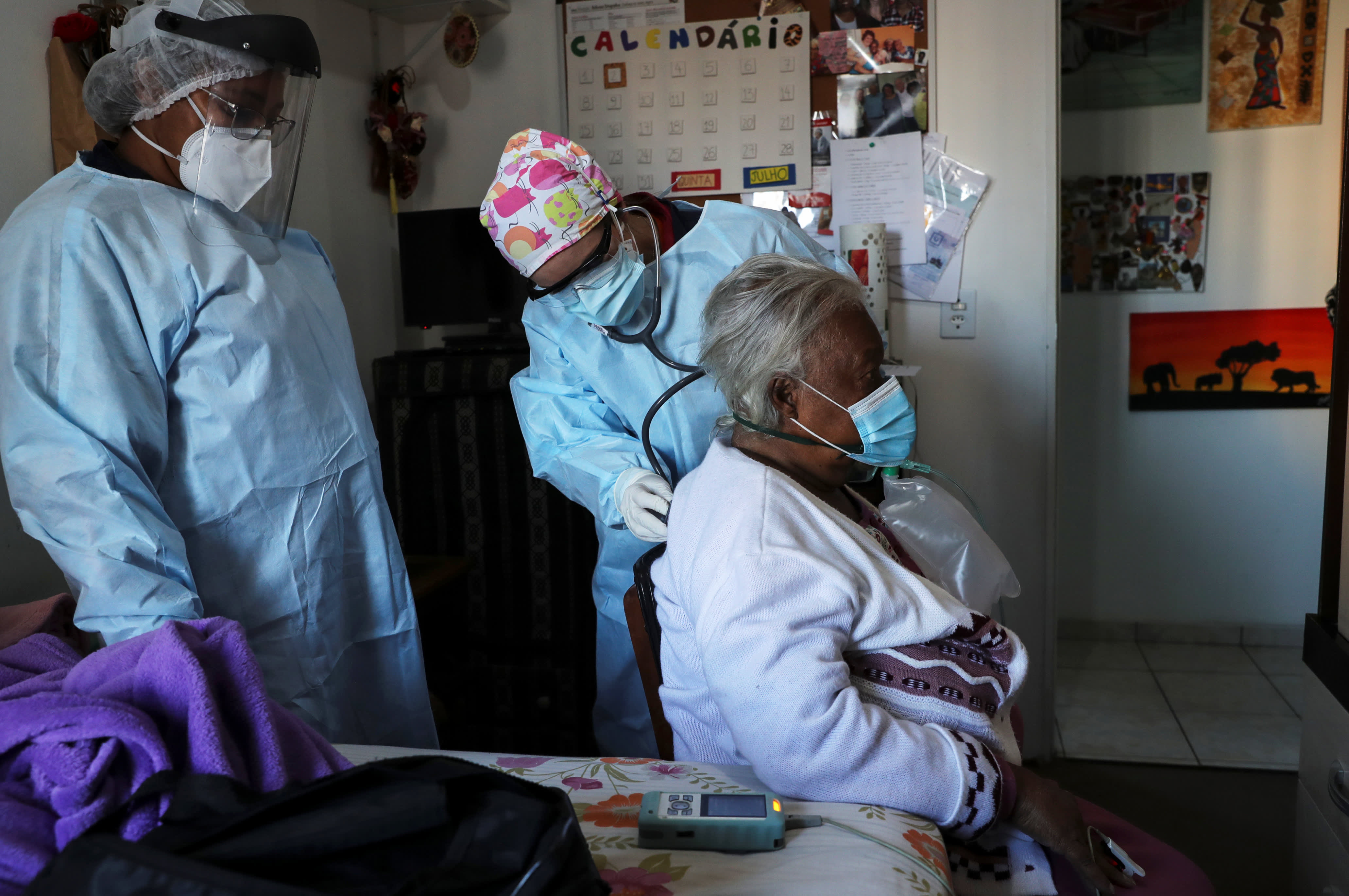Emergency Rescue Service (SAMU) nurse Belisa Marcelino checks the lungs of Maria Geralda da Silva, 84, who is experiencing breathing difficulty and others symptoms of the coronavirus disease (COVID-19), as preparation is made to transfer the patient to a hospital amid the outbreak, in Sao Paulo, Brazil.
Amanda Perobelli | Reuters
You may have heard that Medicare beneficiaries will soon get $200 to help pay for prescription drugs.
You may want to temper your expectations.
While President Donald Trump said during a speech on Thursday that his administration will send that amount via some sort of payment card to 33 million Medicare beneficiaries — which would cost about $6.6 billion — it’s uncertain exactly who is counted in that figure. Roughly 62.7 million individuals — the majority of whom are age 65 or older — are on Medicare, although coverage varies among them.
The White House says the cards would be paid for under a Medicare program that’s generally intended to test innovations to improve health care or lower prices — and must be “budget neutral.” To offset the cost of the cards, savings derived from Trump’s drug-pricing plan would be applied, a White House official told CNBC.
However, that program — which relies on drug manufacturers charging the same price in the U.S. that it does in comparable countries — only exists as a proposal and has not been implemented or enforced.
Trump’s announcement was made as part of a campaign speech delivered in Charlotte, North Carolina, on Thursday, where he signed an executive order aimed at protecting people with preexisting conditions (which already is law, under the Affordable Care Act), preventing surprise medical bills and lowering health care costs. (The order makes no specific mention of the $200 cards.)
“Nobody’s seen this before,” Trump said. “These cards are incredible.
“The cards will be mailed out in coming weeks,” he added. “I will always take care of our wonderful senior citizens.”
More from Personal Finance:
How to navigate volatile markets during retirement
Americans have lost $145 million to Covid-19 scams
Here’s what to know about reverse mortgages
The cards will be for prescription drug copays, the White House spokesperson said. Questions about who is included in the 33 million beneficiaries cited by Trump went unanswered.
Prescription drug benefits are generally delivered through Medicare Part D. While some beneficiaries pair a standalone Part D plan with original Medicare (Part A hospital coverage and Part B outpatient care), others receive their drug coverage through a Medicare Advantage Plan. Between the two, roughly 45 million Medicare beneficiaries have Part D coverage, according to 2019 research from the Kaiser Family Foundation.
Some types of medicine, such as vaccines, are covered under Part B because they are delivered in an outpatient setting.
Some Medicare beneficiaries with high drug costs reach what’s called the “donut hole,” when there’s a temporary limit on what the enrollee’s plan will cover and their per-prescription cost might rise. In 2020, that gap starts once you and your plan have spent $4,020 on covered drugs.
More details about the $200 cards will be forthcoming, an administration official told reporters on a call Friday morning.
